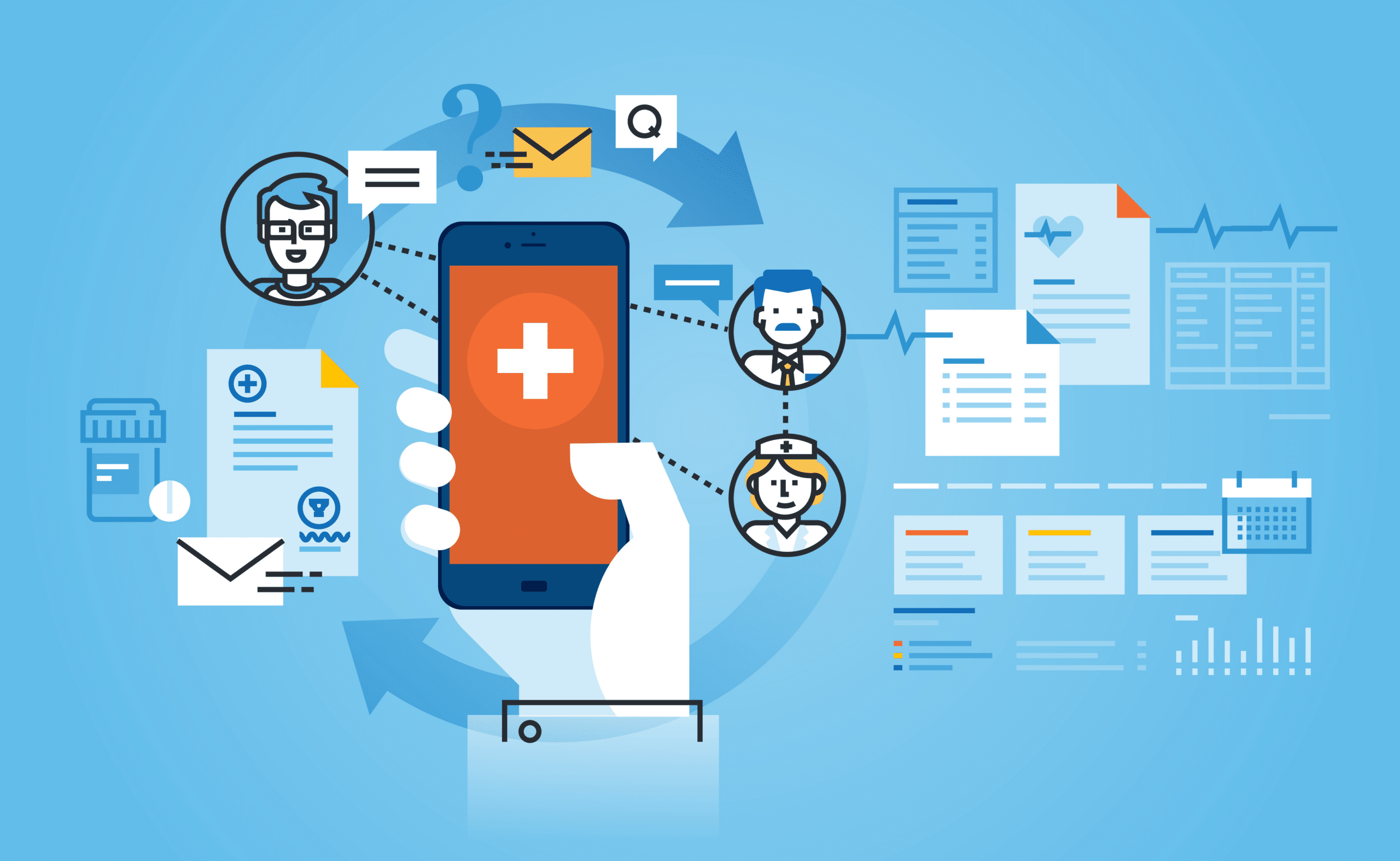Today’s healthcare landscape is in flux, but why? There are several key factors driving this change. In today’s article, we will take the perspective of change being driven by two primary forces:
- Consumers/patients/members demand a better healthcare experience, something similar to their local Starbucks or at-home Amazon shopping experience.
- The entrance of major disruptors within the marketplace that are impeding into the healthcare space, determined to transform the current tedious, manual headaches of healthcare into a more retail type experience where you feel known and connected to the brand.
So how are you, as a member of a healthcare organization, managing this flux into digital transformation? Have you started the process? Where did you (or will you) begin? Why is now the time for healthcare teams to work collaboratively to unite leadership and disparate teams, forging relationships and positioning trust and transparency as foundational requirements to true digital transformation?
The answer to why is simple: If your organization does not make the shift into mastering the modern digital healthcare experience, you may end up with the growing number of other healthcare organizations that cease to exist. In today’s modern healthcare world, patients have a growing number of options on where and how they want to receive healthcare and those options will continue to expand. Here are three ways marketing automation drives the bottom line at your healthcare organization:
- Patients/consumers demand an omni-channel experience to feel individualized
- Data-driven marketing should drive the experience across the continuum of care
- Automated insights and predictive modeling: identify, prioritize, and optimize advanced use cases
As a healthcare marketer who has designed, developed, and deployed enterprise CRM and marketing automation at a major integrated healthcare system, dozens of healthcare organizations as a Salesforce Partner, and consulted on digital strategies on the agency side – I’ve lived through the struggles of disconnected data, legacy tech stacks, siloed teams, limited resources (often 1-3 people serving 1M+ patient population) and loose strategies.
I’ve lived the pain of having to wait weeks to receive a segmented list (predefined at that) pulled from our EHR system from an IT co-worker. I’ve fought the battles to prove that Marketing is a revenue-generating department, and not a cost center. And I’ve been able to work with teams where we proved the ROI (as high as 10:1) using CRM and Marketing Automation. In living through all the trying times, I wish I knew then what I know now.
The good thing is that if you’re currently struggling with anything I’ve mentioned, I’m going to break down three ways Marketing Automation helps solve all of it! Yes, all of it. Keep in mind, there is no quick fix and the road to digital transformation can (and will have) painful times along the way. Much like your patients, we need to look at digital transformation as a full fledged marathon, not a 5k sprint. Additionally, we need to understand that the modern healthcare marketer is quite different from the traditional healthcare marketer. Let’s dive in a little deeper.
1. Patients/consumers demand an omni-channel experience to feel individualized
In healthcare, the patient experience is everything. Patients expect to receive high-quality care, and they want to feel like they are being heard and understood. A comprehensive healthcare marketing automation strategy can help you deliver a seamless patient experience across the continuum of care.
Driving the bottom line at your organization is a constant challenge and the pressure to perform and provide outcomes is likely driving pressure more than ever before. You need to ensure that your marketing efforts are maximizing your resources and delivering a return on investment. One way to achieve this is through marketing automation that focuses directly on creating exceptional patient experiences that result in positive clinical care outcomes.
With marketing automation, you can create personalized patient/consumer journeys that span multiple touchpoints. This means you can engage with patients/consumers via email, SMS, mobile apps, social media, on your website, and other channels, delivering targeted messages to the right person, at the right time, on their preferred channel.
For example, you can use a targeted approach to attract and acquire patients/consumers and send them educational content that leads them to their first/next appointment. You can walk them through an individualized experience that connects the dots between operational interactions they have with healthcare teams through bite-sized chunks of information, educating with relevant content at precisely the right moments in time.
This experience happens in retail all the time, and today’s modern healthcare marketer should be focused on implementing a consistently seamless patient lifecycle management strategy that delivers an exceptional patient experience across the care delivery model. By providing patients with a consistent and personalized experience, you can increase patient satisfaction and loyalty. This, in turn, can lead to increased patient retention, referrals, and revenue.
2. Data-driven marketing should drive the experience across the continuum of care
Data is the lifeblood of marketing automation. By leveraging data, you can gain insights into your patients’ behaviors, preferences, and needs. This allows you to create more targeted and effective marketing campaigns.
With marketing automation, you can collect and analyze data from a variety of sources, including first-party data from your website, email campaigns, social media, search engine marketing, EHR, financial data, and other sources such as trusted third-party sources that contain additional data such as SDOH. You can use this data to segment your patient population, create cohorts, identify trends, and engage with those audiences using personalized targeted marketing and/or outreach messages.
For example, you can use data to identify patients who are at high risk of developing a certain condition. You can then create targeted educational materials and outreach campaigns to help these patients manage their health proactively. By using data to create more targeted and effective marketing campaigns, you can increase your ROI, drive revenue growth, and close gaps in care.
3. Automated insights and predictive modeling: identify, prioritize, and optimize advanced use cases
Marketing automation can also provide you with automated insights and predictive modeling. This means you can gain real-time insights into your marketing campaigns’ performance and make data-driven decisions quickly.
With automated insights, you can track key metrics outlined in your digital front door strategy and tie those into key interactions across campaigns to leverage marketing, clinical, and financial data to understand what is working, how well it is working, and where you can optimize. Of course, this level of detail outputs your ROI from the initial point of engagement (by channel) through their first appointment (direct attribution) and follows the downstream (indirect attribution) for other related services stemming from that initial encounter. You can also set up automated alerts to notify you of any changes in performance metrics. This allows you to quickly identify issues and make adjustments to your campaigns in real-time.
Predictive modeling takes automated insights a step further by using machine learning algorithms to predict future outcomes. For example, you can use predictive modeling to identify patients who are most likely to need a certain procedure or treatment. You can then create targeted marketing campaigns to reach these patients proactively.
By using automated insights and predictive modeling, you can optimize your marketing campaigns for maximum impact. This can lead to increased patient acquisition, retention, and revenue growth.
In conclusion, marketing automation can be a game-changer for healthcare organizations looking to drive the bottom line. By delivering a seamless patient experience, leveraging data to create targeted campaigns, and using automated insights and predictive modeling to optimize marketing efforts, you can maximize your resources and achieve your business goals. Learn how Silverline’s healthcare marketing automation team can help your organization.




